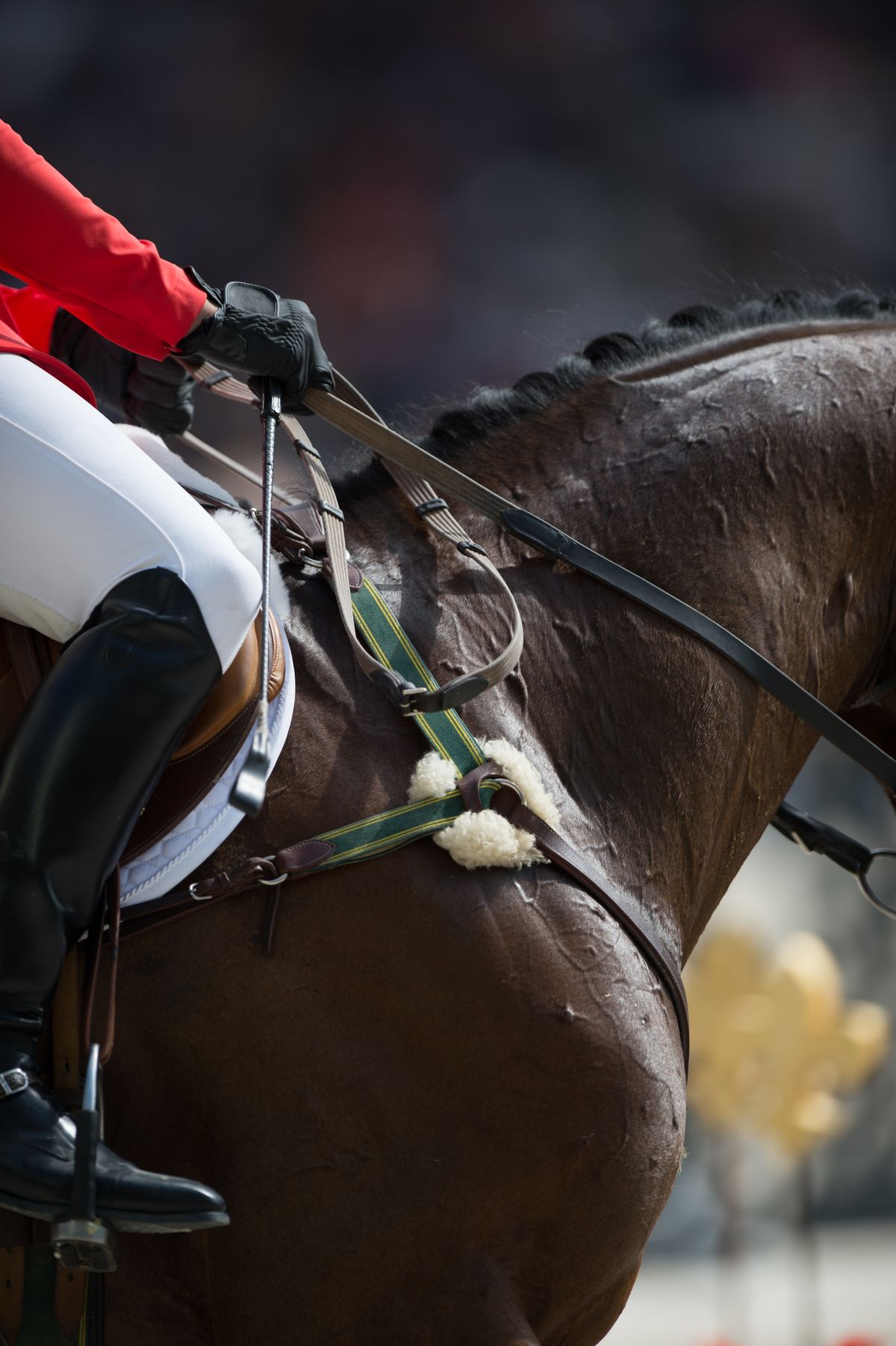On Good Hands and Letting Go
Something that few horse people find and even less can explain, "feel" is not something you can teach. Feel is something that takes years of perfecting, interacting with many different kinds of horses, and above all else - trial and error.

Something that few horse people find and even less can explain, "feel" is not something you can teach. Feel is something that takes years of perfecting, interacting with many different kinds of horses, and above all else - trial and error.
When you first start riding, your main goal is to stay in the saddle. It's unnatural to ask a human to balance with their core, while squeezing with their leg, and to learn that hands are just as much for holding as they are for letting go. Most amateur riders use their hands to balance and hold on - and this is absolutely incorrect in any form of riding. Your hands are for steering and for balancing your horse, not yourself.
Our sport is incredibly decieving to the untrained eye. The goal is to look effortless, because effortless is the hardest thing to achieve. Jumpers are simple to judge. It's a scoring system based upon numerical values. Taking a rail or having a time fault comes with point consequences. Lowest score wins.
However, the hunter ring is an entirely new arena. Hunters are judged subjectively, meaning although everyone is wearing the exact same black and white attire and no horses are allowed to wear leg gear, it is up to the rider to create the "look" of effortless grace.
If you ever want to see what a perfect hunter round looks like, look no further than Tori Colvin's perfect 100 round back in 2015.
You'll notice that ideal hunter horses go with a poked out nose and a soft, lopey gate. The riders keep slack in the rein and ride in a half-seat. Unlike in jumpers and dressage, it's not about getting a horse to go exactly on the bit or too tightly wound in a package.
A winning hunter round looks easy. Even though it's anything but.
Developing hunter horses is immensely more difficult than developing jumpers or eventing horses. Hunter horses have to be adjustable, floaty, and most importantly: able to carry themselves.
If you watch dressage rounds, horses are held in the bridle. They are taught to push from their hind end while holding their front end lightly. The movements are incredibly complex and require next-level fitness of both horse and rider. Again, when you watch dressage, it should appear to be effortless – but it's a different sort of effortless than the hunter ring entirely.
If you want to see what precision high level dressage looks like, check out Charlotte Dujardin and Valegro in this stunning record breaking freestyle back in 2014.
What do all of these disciplines have in common? The best riders in the world have to have good hands. Good hands know when to hold, when to soften, and when to let go.
Just like when it comes to any sort of training - with animals or otherwise - you cannot constantly keep the pressure and expect to have positive outcomes. A rider's hands are connected to her horse's mouth. Whether that horse is trying to execute a pirouette or get over a jump, they have to be able to reach with their head in order to use their body properly.
Sometimes, this means the rider offering help in the form of a supporting hand, but when it comes to developing young horses to carry themselves, too much of a good thing can become a crutch. And worse - sometimes too much pressure and not enough release can have the opposite effect that you'd want. There is only so much of a frame you can put a horse into before you've taken away your cadence. And a lot of horses who feel slighted by a rider hanging on their mouth, especially when it means they come over a fence too slow and the bascule becomes a sharp triangle instead of an elongated arch, tend to develop the same habit: they will land and take off after the fence.
After years of handling this behavior on school program horses, in both private programs and my college IHSA program, I noticed that this behavior in a horse is perhaps one of the most commonly misunderstood. It can seem counter-intuitive to let go when you feel your horse start to take off, especially if you find yourself on a Thoroughbred. It's imperative for Off-the-Track Thoroughbred (OTTB) owners, riders, and professionals always take into account how a horse was raised when they were on the track.
Because on an OTTB, pulling hard actually means "go faster".
It took many years of learning this the hard way. Sometimes, I look back at my first decades in the saddle on top of other people's horses and look at is as a gift. The gift of brutal honesty that all my trainers gave me. Because they weren't interested in a girl with bad hands riding their horses.
Once I mastered good hands and letting go, I slowly progressed onto nicer and nicer horses. I was never the thinnest rider (which often meant I was overlooked for show opportunities), but I was the girl you could count on to keep a hot horse calm and keep its head in the game. It wasn't uncommon for me to exercise ride or school imported sale horses or one of the many wealthy client's push-button hunters. Not many people were gifted with the opportunities I was, but I also had to work extremely hard for them.
In life and in horses, learning to let go is just as critical as learning to hang on.